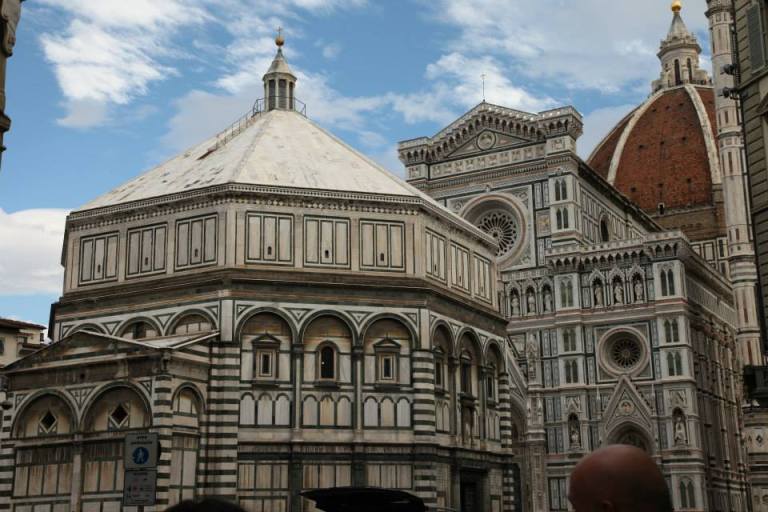
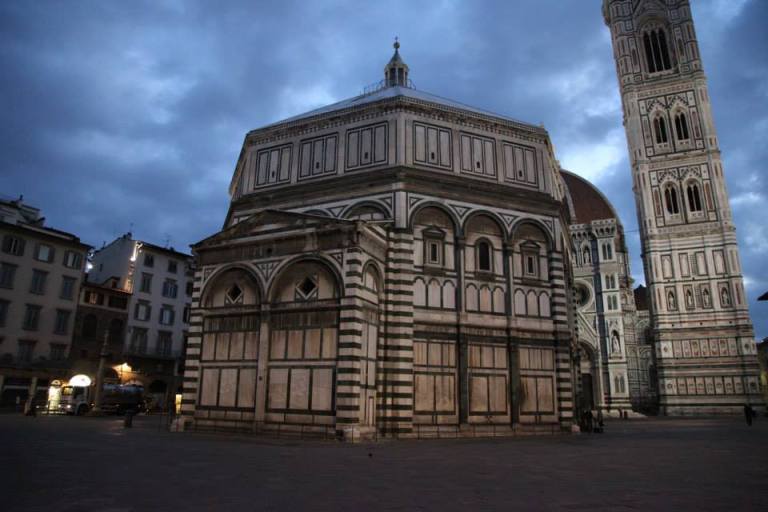
The primary CISA3 field site in 2013 was the Baptistery of St. Giovanni, one of Florence’s most famous, venerated, and mysterious monuments. For our research goals see this.
The Opera del Duomo di Santa Maria del Fiore (OPA) invited CISA3 researchers to join their interdisciplinary team of researchers working to establish a chronology of construction for the Florence Baptistery of St. Giovanni (John). The evolution of the site from its Roman origins upwards is rather mysterious. Significant research has been done by dedicated scholars, but they’ve no way to correlate that information altogether to start making sense of it. Enter CISA3 with our concept of layered realities of data draped on a digital scaffold.
Thus we imaged (via terrestrial laser scanning, thermography, high resolution photogrammetry (including structure from motion), stereoscopic imaging, and multispectral imaging the interior of the building and the exterior of the building – emphasizing spaces that the public has no access to (i.e. the upper passages – there are three floors up there that no one ever sees or even realizes as really only one level of balcony is visible from the ground), and the subterranean Roman archaeological site underneath the altar/scarsella – as well as the main chamber of the active house of worship which the public can access (for 10 euro).
Imaging the Exteriors of the Baptistery of St. Giovanni
To image the exterior- we did the majority of imaging and scanning very late at night when the Piazza was as empty as possible for clear visuals (its never that empty unfortunately and typically full of rambling drunk American students throughout the night). This meant often pulling double days–as we would often be working on other projects or inside the Baptistery during the day and I’d need to be up to laser scan everything at night. And some fairly elaborate scheduling to make sure that everything was charged up to deal with such frequent use. This involved naps. Not proper sleep, this was a field season of napping whenever we could in-between projects to pretend we were getting any sleep.
However, to get the light and proper colors for the photogrammetry we wanted for structure from motion and texturing over onto the point cloud model from laser scanning, Vid Petrovic had to play a cat and mouse game with the sun and stay on constant call, ready to run back to the Baptistery from whereever else we were working in order to photograph each side of the Baptistery.
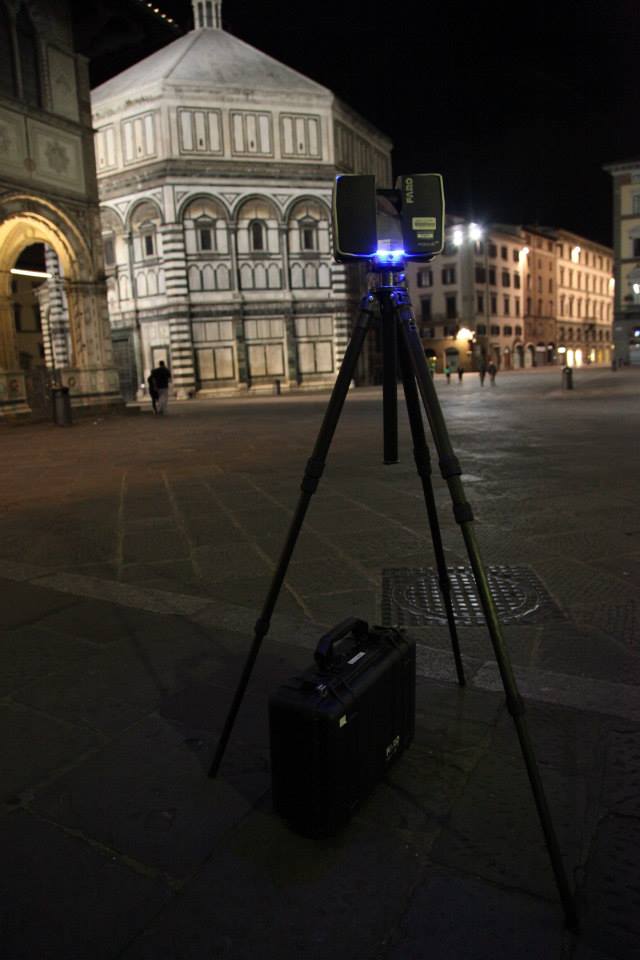
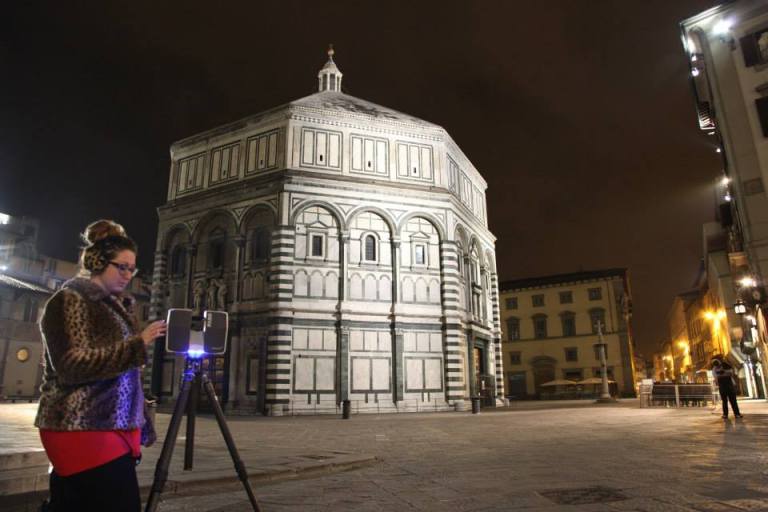
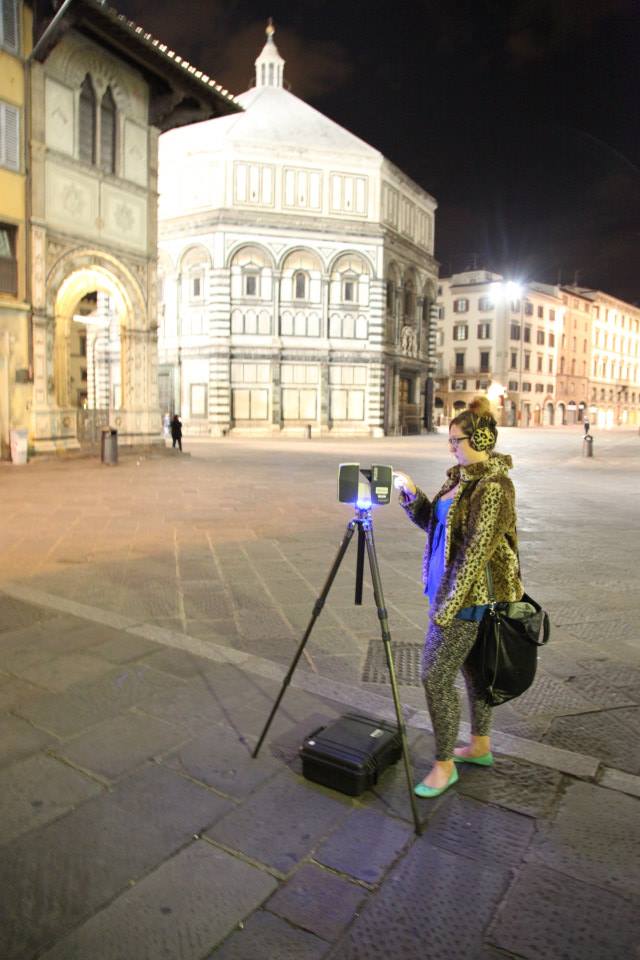
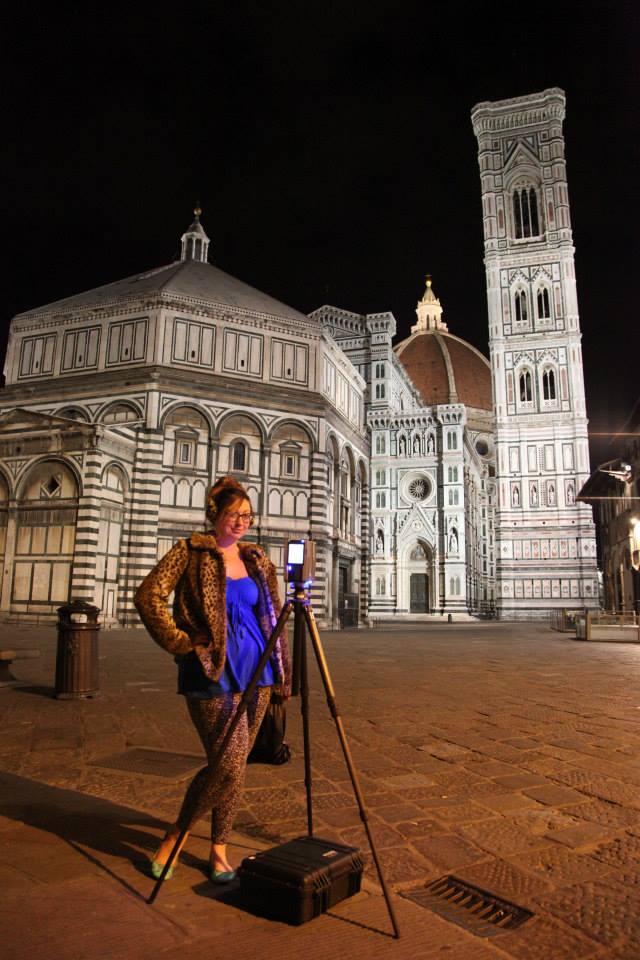
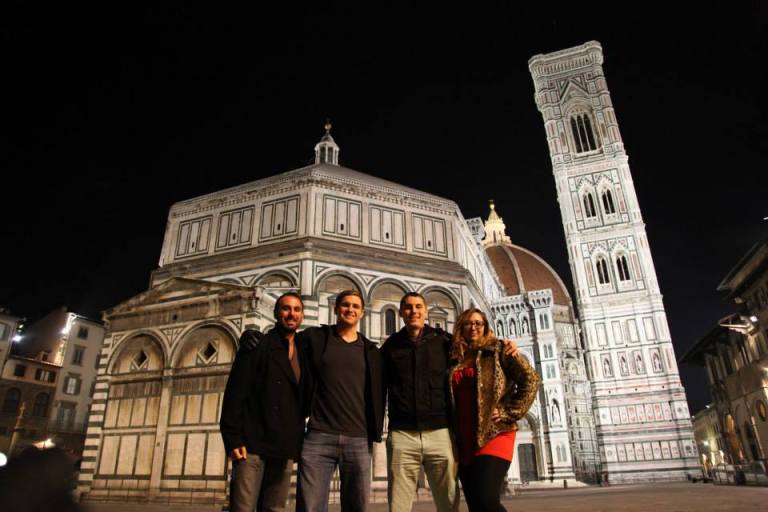


Please note: There were just so many good pics to choose from of our work at the Baptistery, so I divided the blog into four blogs. Each one will have more or less a similar primary chunk of text (in case anyone is playing with these out of context), with spatially themed pics dealing with the Outside, Inside, Below, and Above of the marvelous and wonderful Baptistery.
